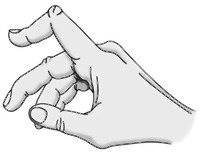 Boutonnière deformity is an injury to the tendons in your fingers that usually prevents the finger from fully straightening. The result is that the middle joint of the injured finger bends down, while the fingertip bends back. This is the characteristic shape of a boutonnière deformity. Unless this injury is treated promptly, the deformity may progress, resulting in permanent deformity and impaired functioning.
Boutonnière deformity is an injury to the tendons in your fingers that usually prevents the finger from fully straightening. The result is that the middle joint of the injured finger bends down, while the fingertip bends back. This is the characteristic shape of a boutonnière deformity. Unless this injury is treated promptly, the deformity may progress, resulting in permanent deformity and impaired functioning.
There are several tendons in your fingers that work together to bend and straighten the finger. These tendons run along the side and top of the finger. The tendon on the top of the finger attaches to the middle bone of the finger (the central slip of tendon). When this tendon is injured, the finger is not able to be fully straightened.
Boutonnière deformity is generally caused by a forceful blow to the bent finger.
It also can be caused by a cut on the top of the finger, which can sever the central slip from its attachment to the bone. The tear looks like a buttonhole (“boutonnière” in French). In some cases, the bone actually can pop through the opening.
Boutonnière deformities may also be caused by arthritis. About one third of all people with rheumatoid arthritis also have fingers with boutonnière deformities.
